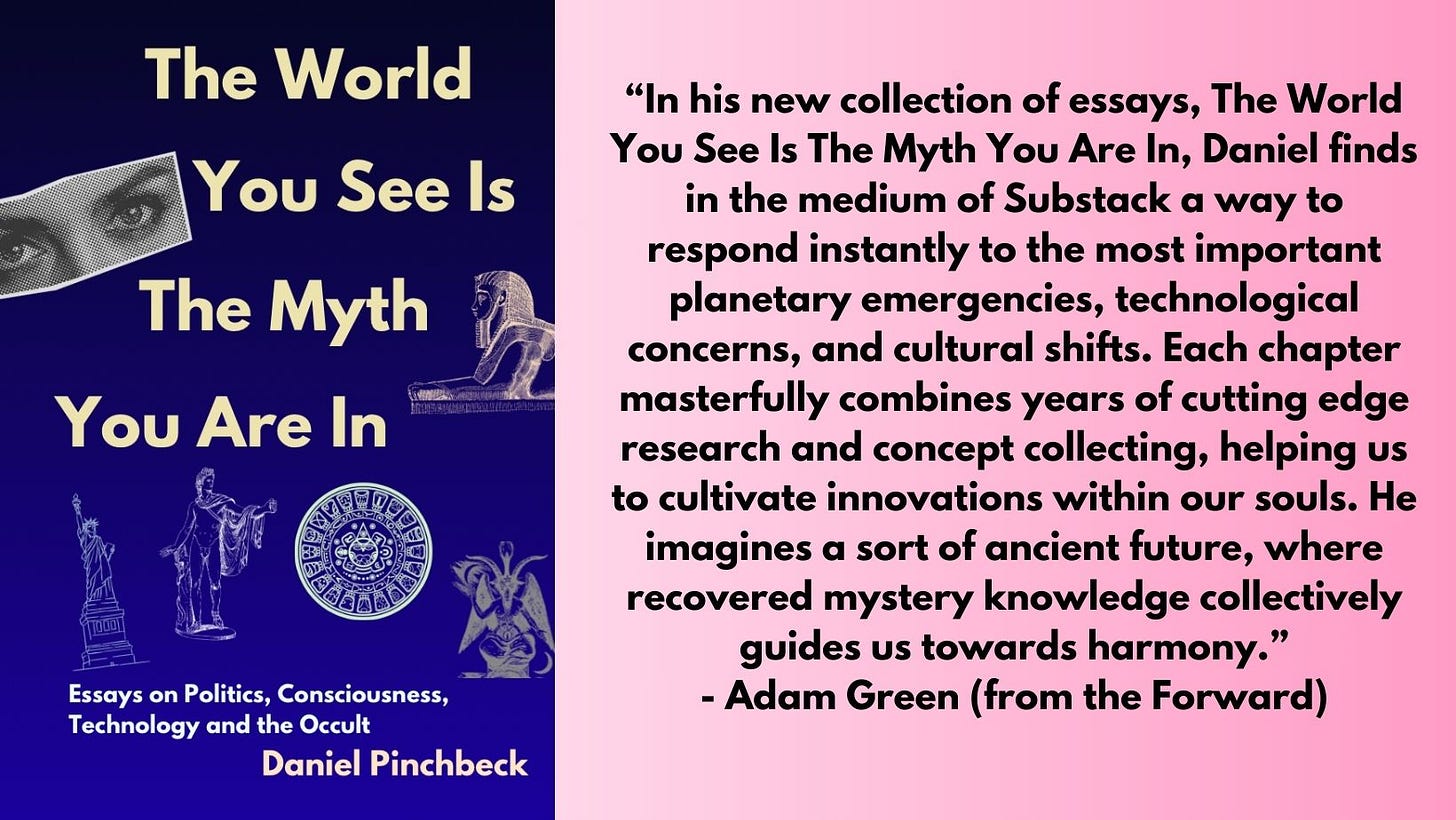
In my last few essays, I proposed that we can better understand certain aspects of occultism or esotericism through the prism of contemporary physics (which tells us the universe is “not locally real”), combined with the philosophy of monistic idealism. As monistic or analytic idealism states, and supports via logical reasoning, consciousness, not matter, is the underlying reality, the ontological primitive.
I also explored how we might apply Rupert Sheldrake’s theory of morphogenetic fields and morphic resonance to help us understand certain seeming paradoxes, such as the diversity of esoteric beliefs and shamanic practices around the world. If consciousness is primary, we can envision how an indigenous culture that develops its own morphogenetic fields through ritual practices and shamanic work over centuries, connected with a particular ecosystem, may reliably produce “magical” paranormal or psychic results in their local context.
I find Jean Gebser’s work on consciousness structures invaluable as a model. Certain capacities, such as magic, became relatively inaccessible to us in the modern era, due to the predominance of what Gebser named the “mental rational” structure of consciousness, with its overwhelming emphasis on left-brain rationality, empiricism, and scientific proofs requiring repeatability and verifiability. Gebser conceptualized a new consciousness structure, the “integral-aperspectival,” that, he believed, would emerge as a result of the collapse of the mental-rational structure.
This collapse, I suspect, is happening now. Artificial Intelligence is one manifestation of this acceleration, which Gebser predicted as a kind of mania of mechanized proliferation coming at the end of an evolutionary stage. (So where is this new consciousness structure, Jean?)
As I also noted in another recent essay, I suspect we may be racing not only toward the collapse of the mental-rational structure, but civilizational collapse and, potentially, human extinction. Barring some miracle (which is always possible), this seems the likely result of the biospheric and technological processes we have unleashed. We are trapped by primitive primate psychology, obsolete social structures, and belief systems such as nationalism, free market Capitalism, and religious fanaticism. Ecologically, we may have already passed the point of no return.
Thanks to Putin, an aging psychopath motivated by vengeance and pride, the threat of nuclear war looms over us again. Artificial General Intelligence may soon break free of our efforts to control it. I don’t know about you, but I get this eerie sense that those leading AI, like Sam Altman, are half-possessed by an occult force or an Ahrimanic trickster entity using them to break into our world. Runaway climate change could kill off the plankton in the ocean which produces 60% of the oxygen we breathe. And so on.
Given all of this, I feel at least a tiny subset of humanity should try to study, explore, experientially verify, and anchor this new paradigm I am seeking, however awkwardly, to define here. I know this is totally obscure, incomprehensible, for the vast majority of people at this point. But as Donella Meadows pointed out, a paradigm shift offers the highest leverage for transforming society as a whole, and it can happen instantly for anyone. Sheldrake has made advances in validating the “hundredth monkey principle,” which proposes that, once a small subset of a species gains a new awareness or learns how to use a new tool, that capacity can spread, via morphic resonance, across the entire species, in a nonlinear and nonlocal way. Once a small group anchors it, the paradigm of monistic idealism could spread rapidly, as other possibilities get exhausted.
In a universe made of consciousness, reality shapes itself, to a certain degree, to match the beliefs, the set and setting of the perceiving subject. As the Buddha put it: “As perceived, so appears.” Or in Patrick Harpur’s words, which I borrowed for my new book: “The world you see is the myth you are in.” If we are leaving behind one paradigm, one mythic structure, we must be entering another one. Right now, we find ourselves on the boundary, the liminal space, between worlds and myths.
But what difference does any of this make if we are, indeed, hurtling toward extinction?
Keep reading with a 7-day free trial
Subscribe to Liminal News With Daniel Pinchbeck to keep reading this post and get 7 days of free access to the full post archives.




